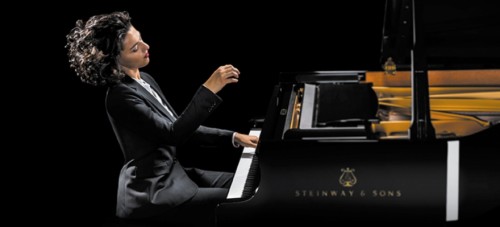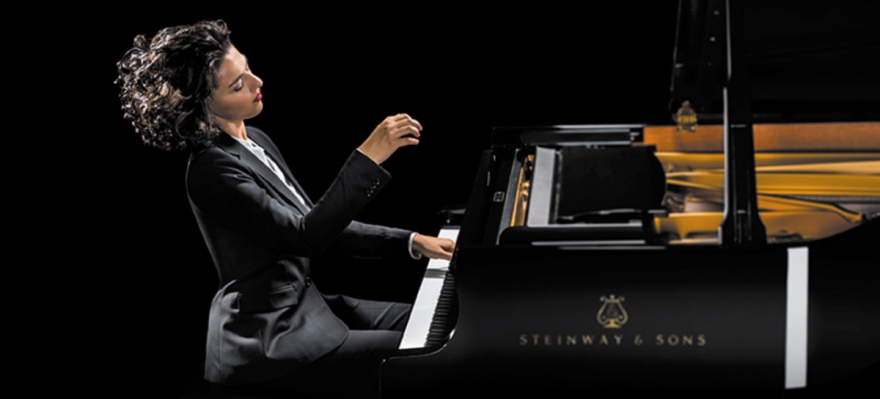 United Kingdom Brahms, Tchaikovsky/Pletnev, Liszt: Khatia Buniatishvili (piano). Queen Elizabeth Hall, London, 9.5.2018. (CC)
United Kingdom Brahms, Tchaikovsky/Pletnev, Liszt: Khatia Buniatishvili (piano). Queen Elizabeth Hall, London, 9.5.2018. (CC)

Brahms – Piano Sonata No. 3 in F minor, Op.5
Tchaikovsky/Pletnev – Concert Suite from The Nutcracker
Liszt – Rhapsodie espagnole, S254; Réminiscences de Don Juan, S418
Couched in the heart of nineteenth-century repertoire (albeit some of it in a modern, Pletnev, arrangement), this was Khatia Buniatishvili playing to her strengths. She clearly has a natural affinity to Liszt, but actually it was the Brahms that impressed most.
Playing on a well-prepared Steinway, her account of the immense Op.5 Sonata by Brahms was characterised not only by fearless virtuosity (particularly in the Scherzo), but also by real intelligence. Whether or not one agrees with her way of starting a piece with a grand gesture before the audience applause has died down – not the only time in the evening she employed this – her realisation of Brahms’ variegated surface over the course of the entire work was remarkable. She gave space in the first movement where required; her staccato touch, too, was perfectly judged here and throughout. Her sweet-toned, perfect legato in the intensely personal second movement was a thing of joy, as were her true pianissimi and her realisation of Brahms’ voicing, auxiliary lines appearing almost as shadows, ghosts of voices. The Finale exhibited a huge variety of touch in just its first few bars; descending chords later were exquisitely judged. There is far more than technique to Buniatishvili.
Maybe much of the audience had come to hear that technique though, as the ambient coughing was more subdued in the all-Liszt second half. The Tchaikovsky/Pletnev Concert Suite from The Nutcracker – again begun straight in without ado – was chock-full of delights, the seamless exchanges of runs in the ‘March’ followed by a beautiful ‘Dance of the Sugar-Plum Fairy’. That staccato touch which was so notable in the Brahms returned for the ‘Chinese Dance’, while Buniatishvili paced the final ‘Pas de deux’ so its climax was truly effective.
Buniatishvili’s Liszt is something to savour. Truckloads of notes aside – one can safely say that as the actual technical difficulties seem to hold few perils for Buniatishvili; the perilous leaps in particular were staggering – there was a terrific imagination at work in the Rhapsodie espagnole. The Réminiscences de Don Juan, of course after Mozart’s Don, again found musicality more noteworthy than mere volume of notes, in this case how Buniatishvili allowed the theme of ‘Là ci darem la mano’ to emerge naturally and beautifully as part of the ongoing discourse.
A remarkable recital, crowned by a nicely unbuttoned account of the ‘Friska’ from the Liszt/Horowitz Hungarian Rhapsody No.2.
Colin Clarke
